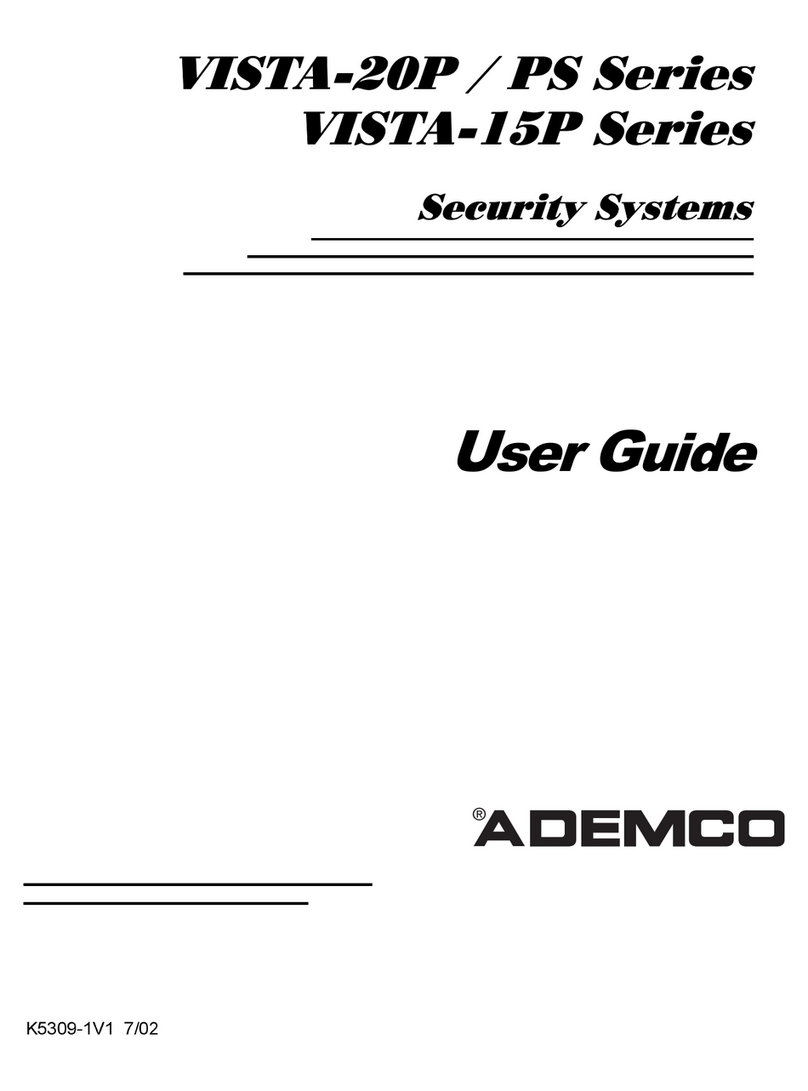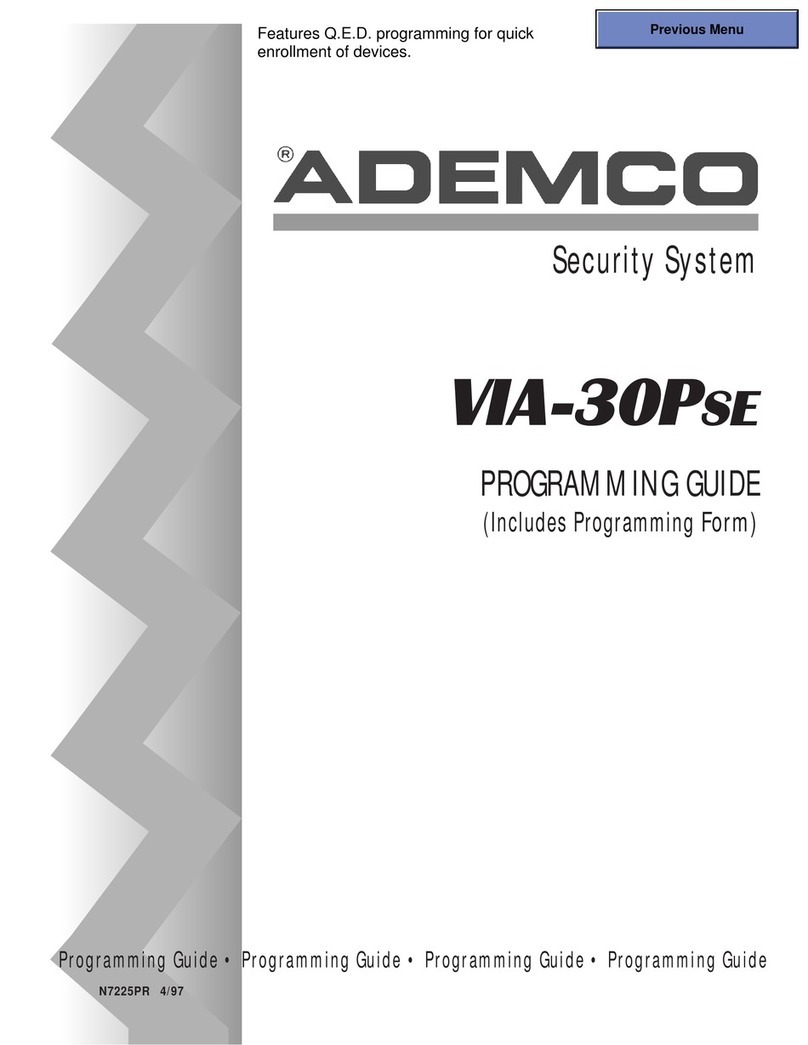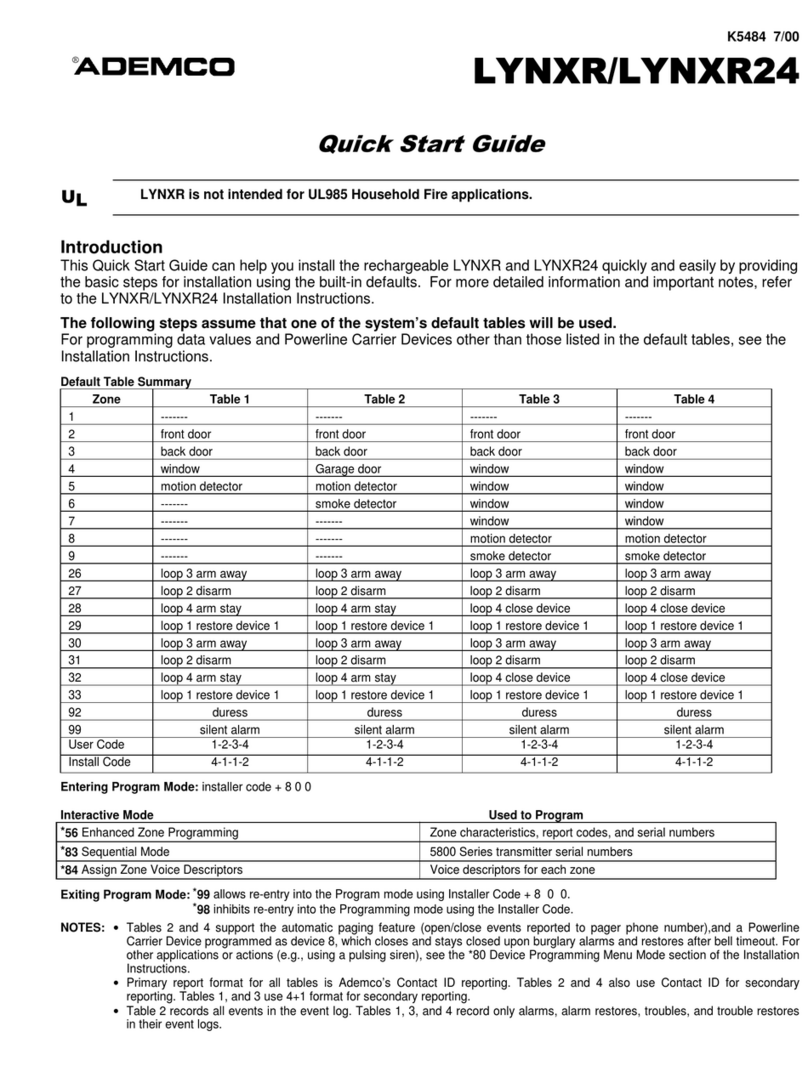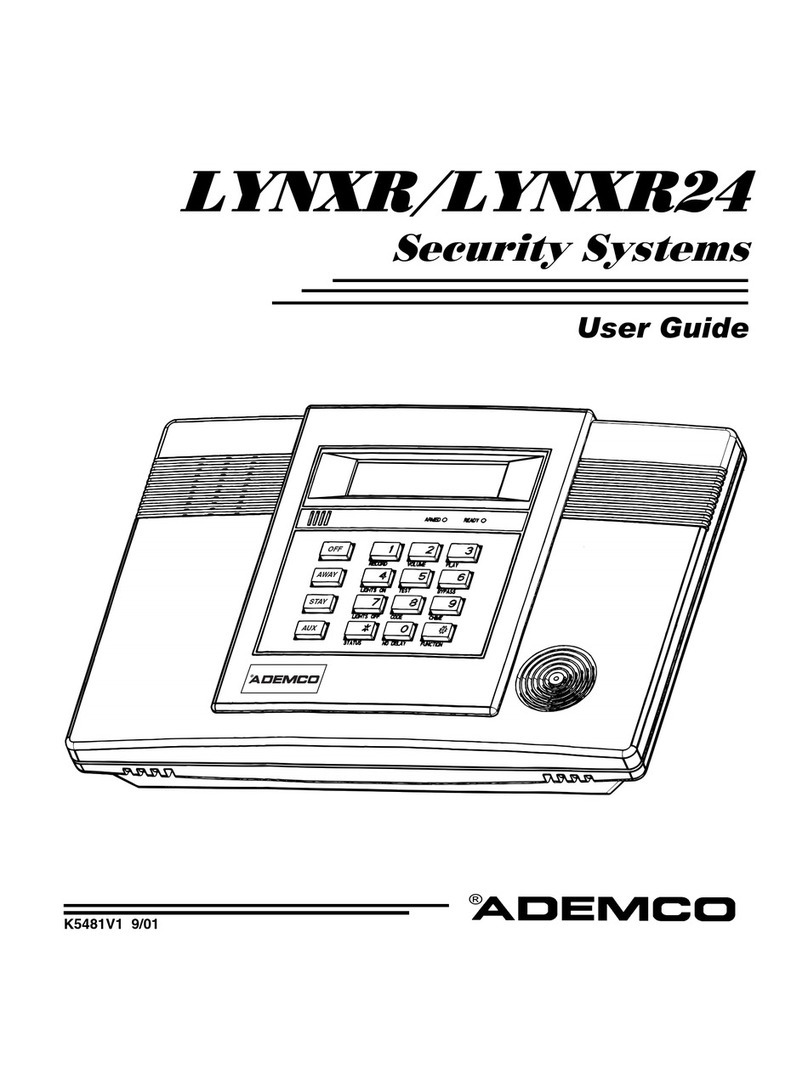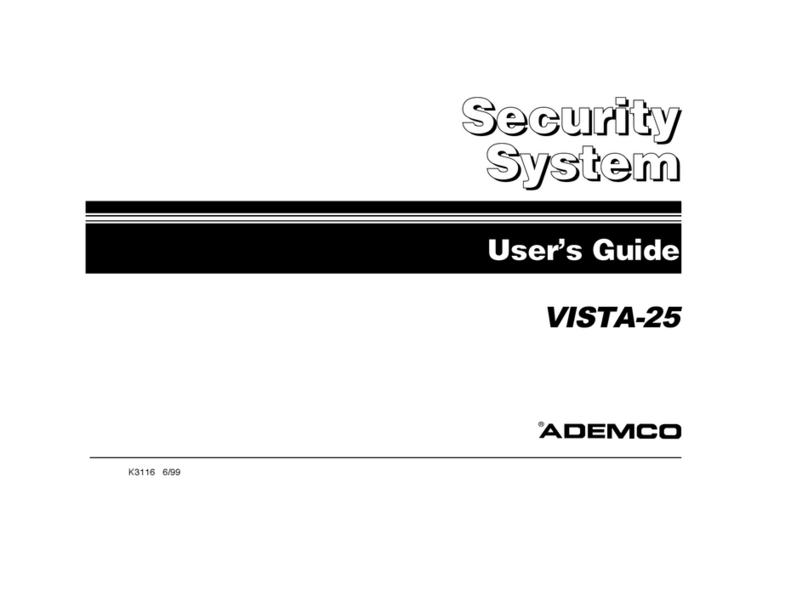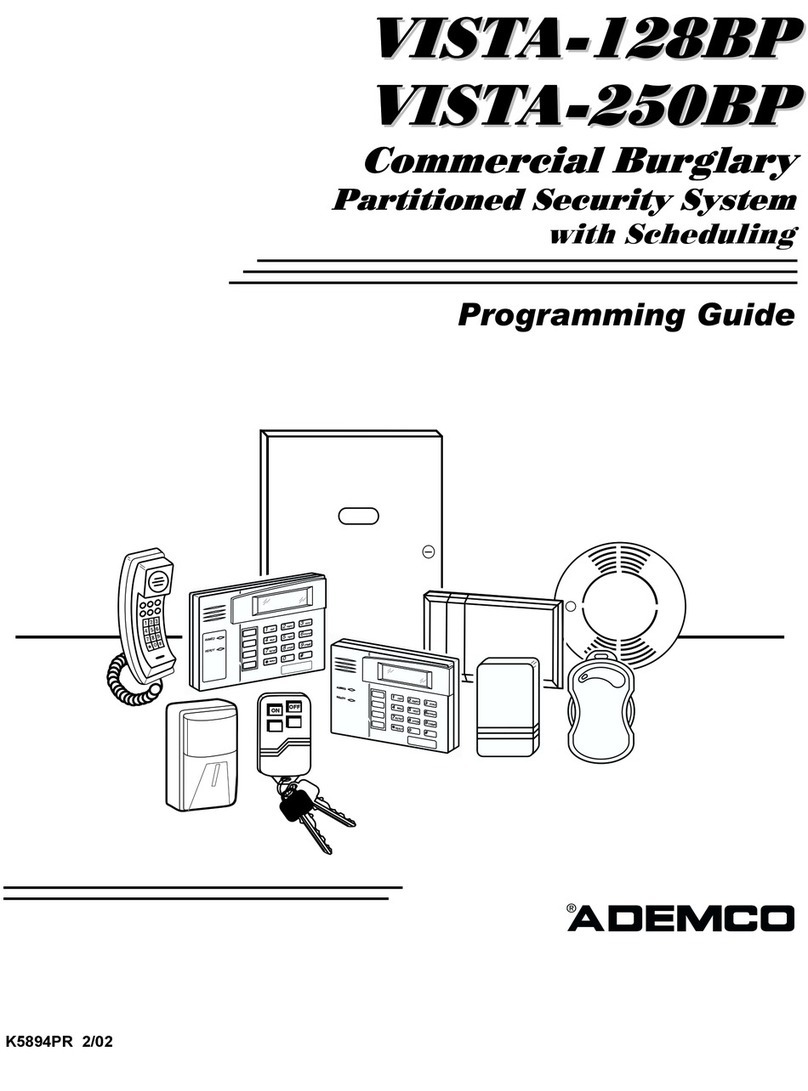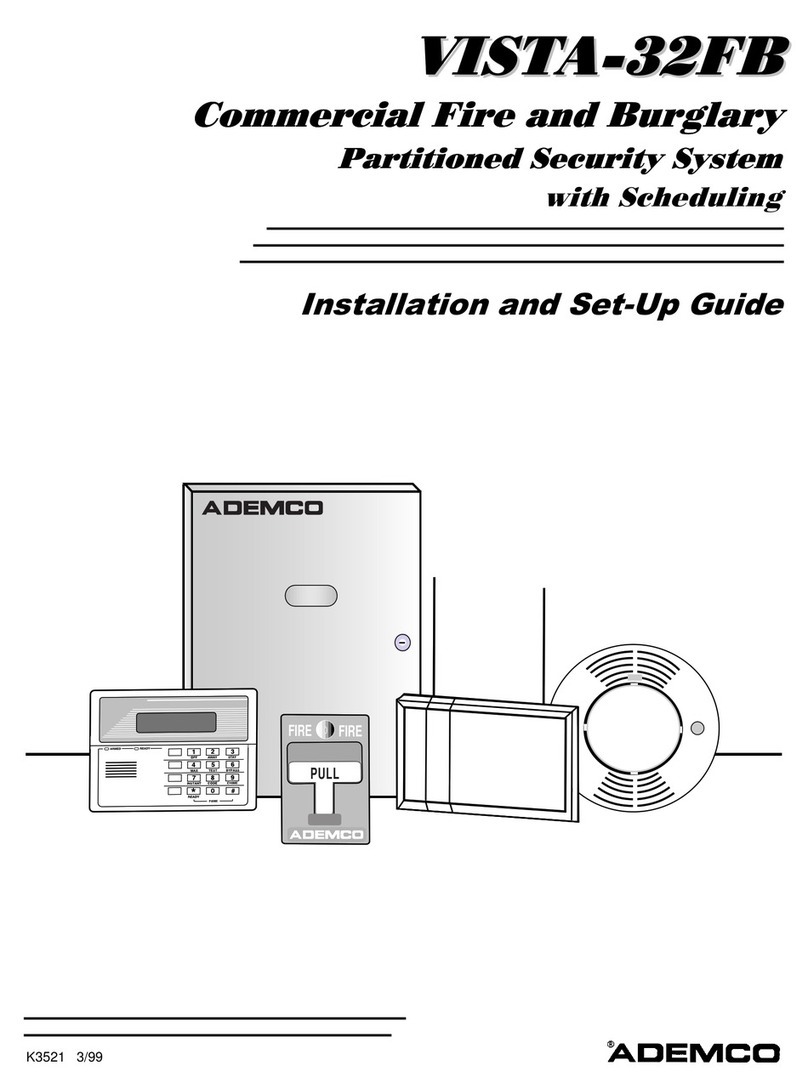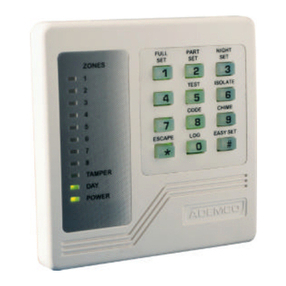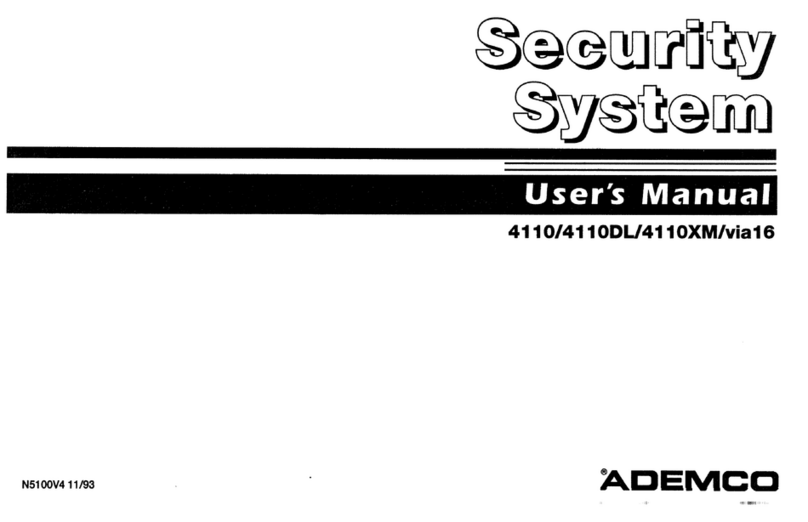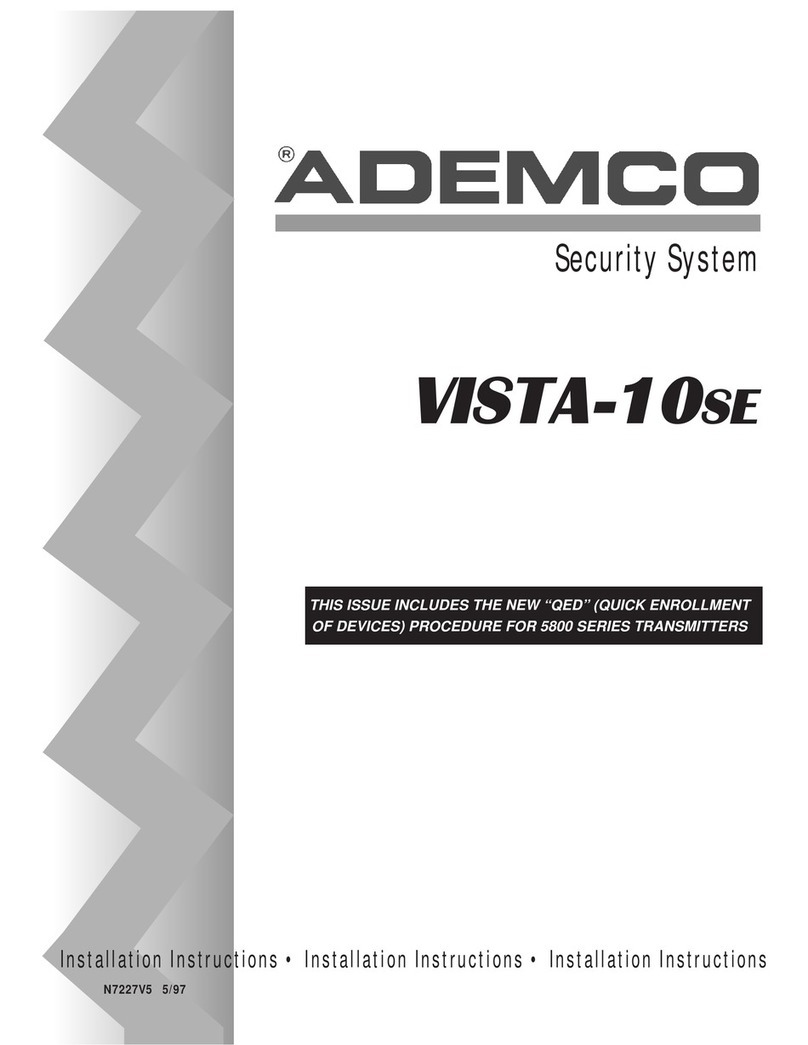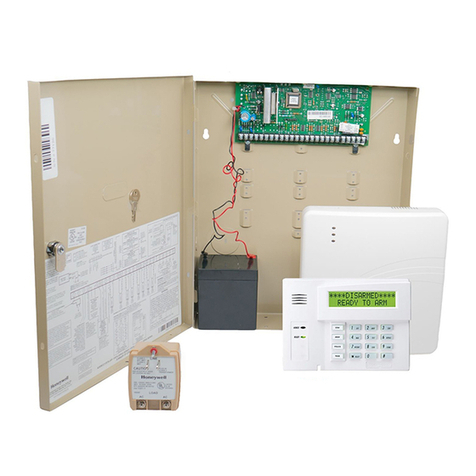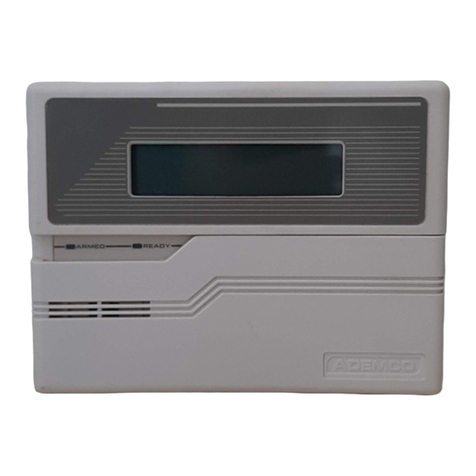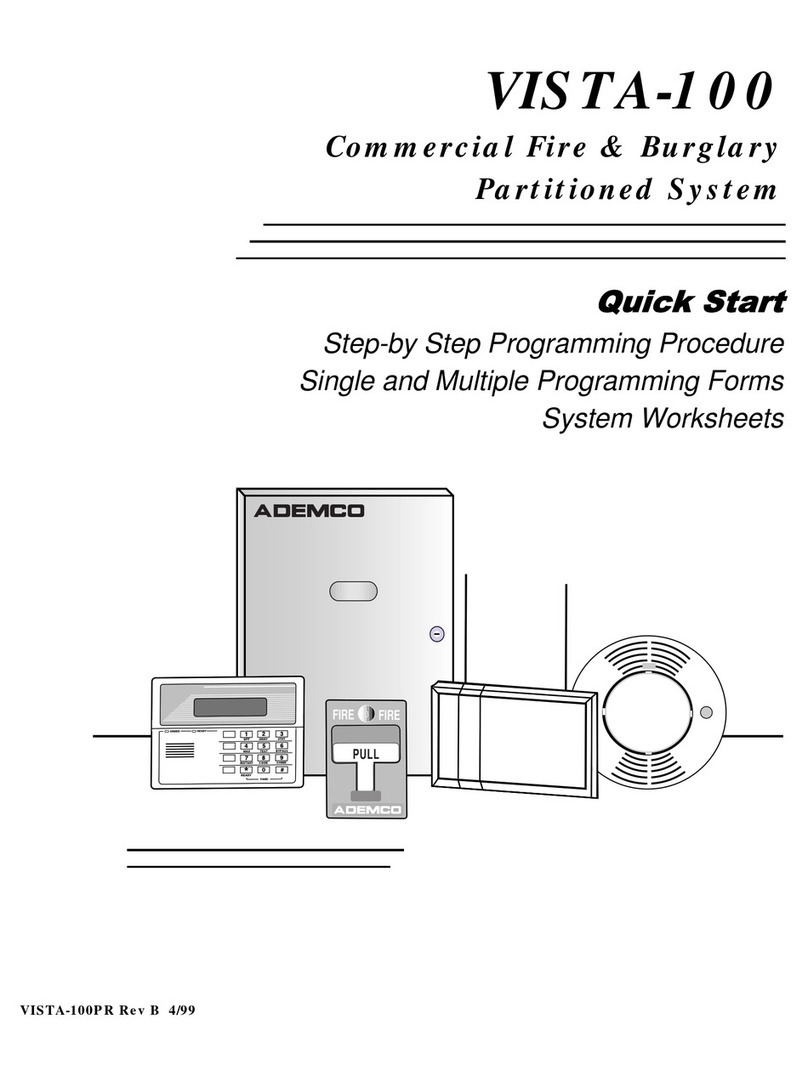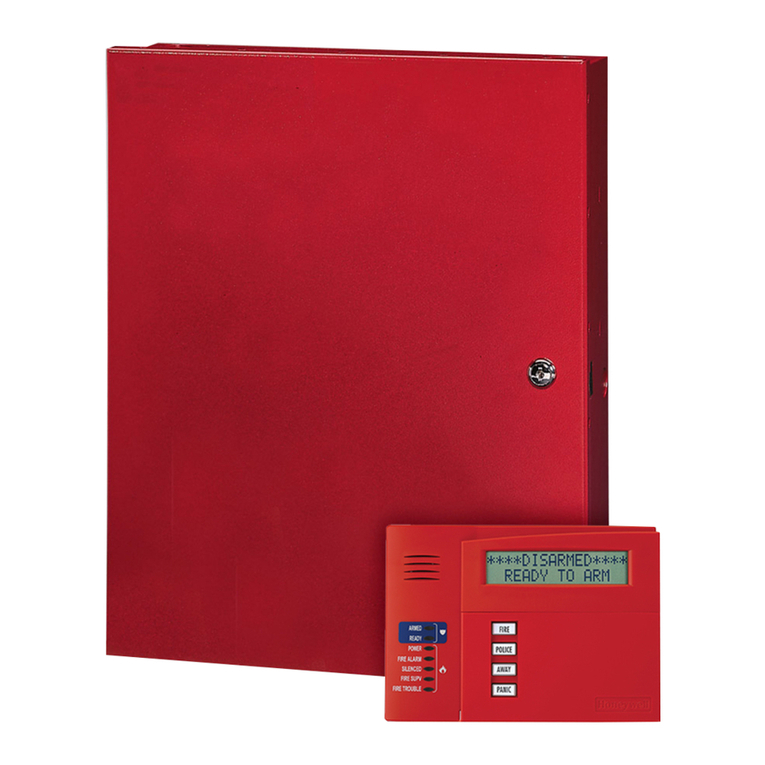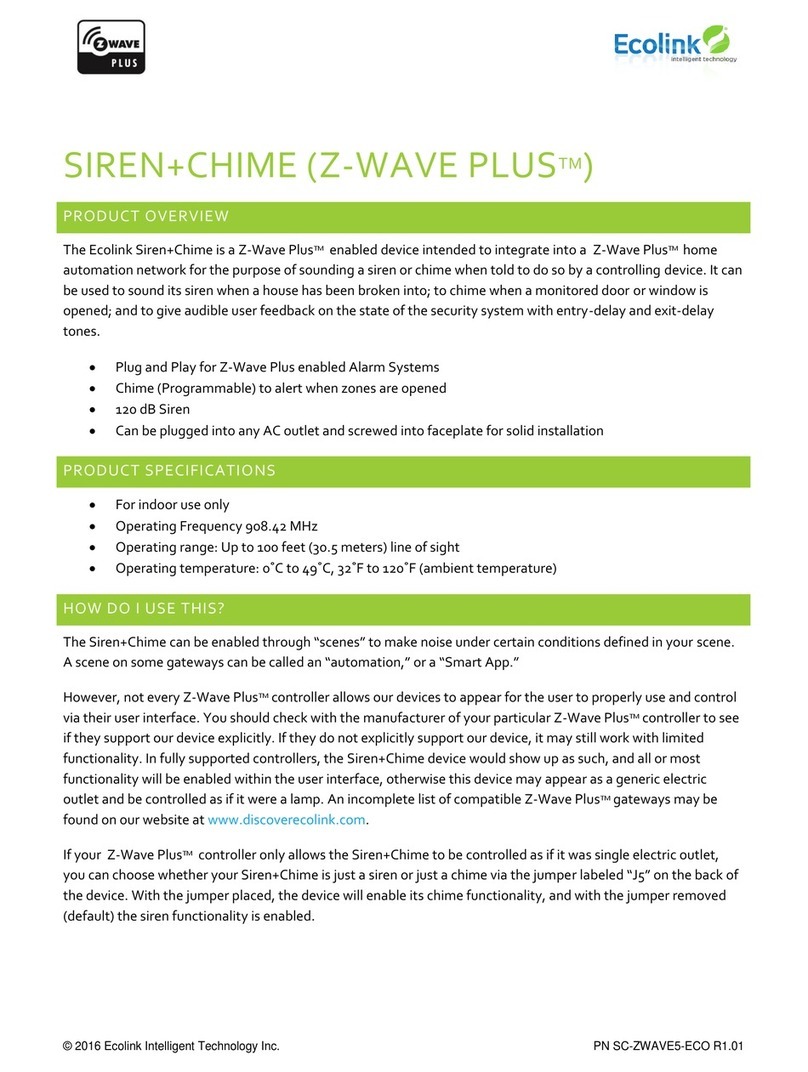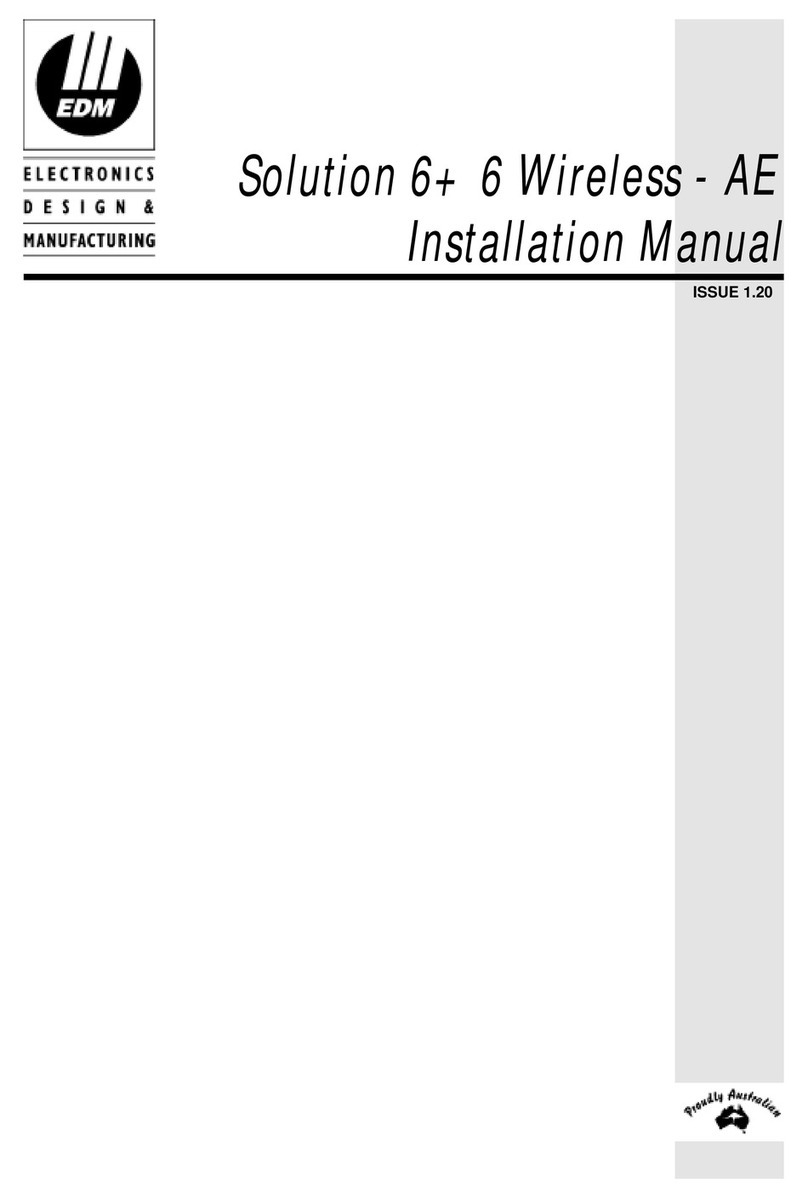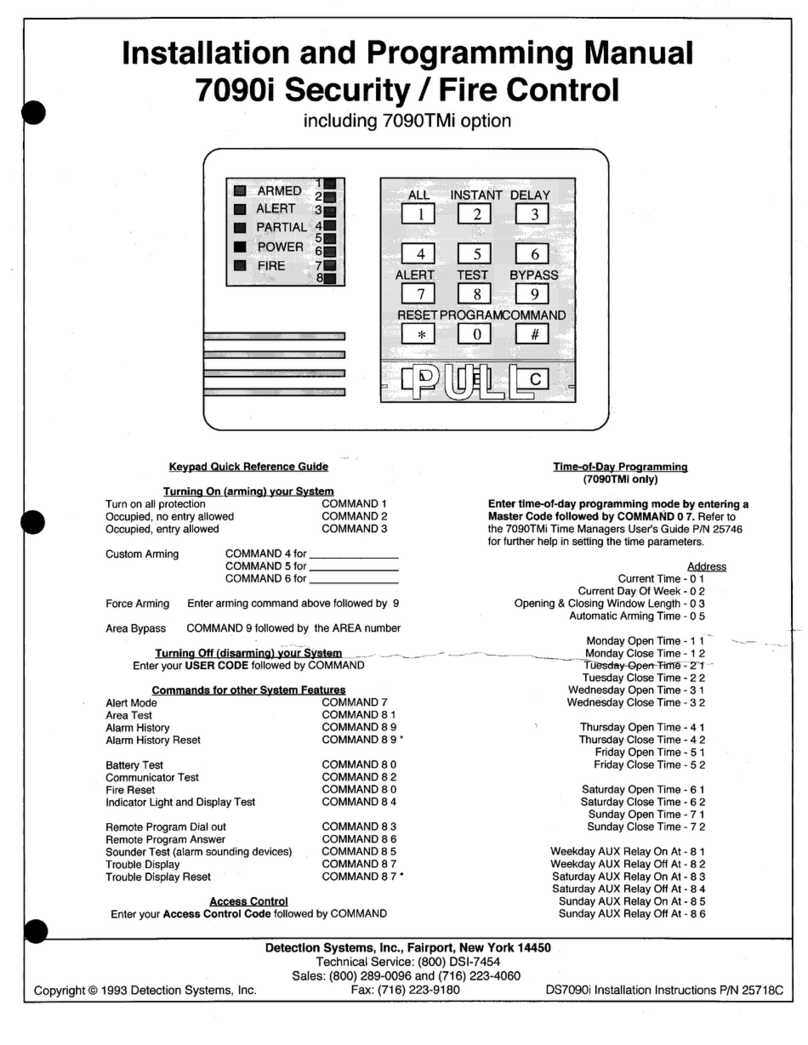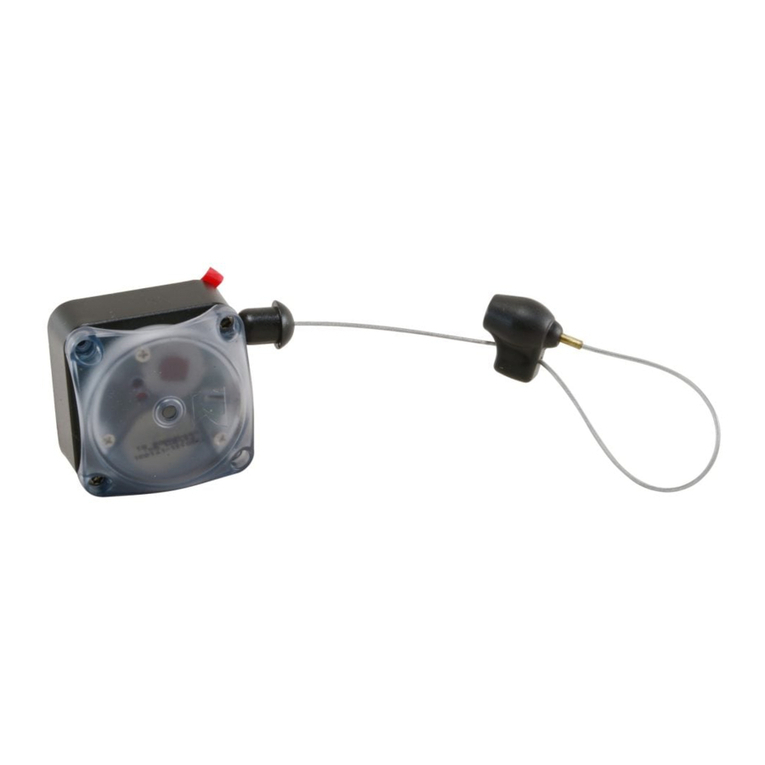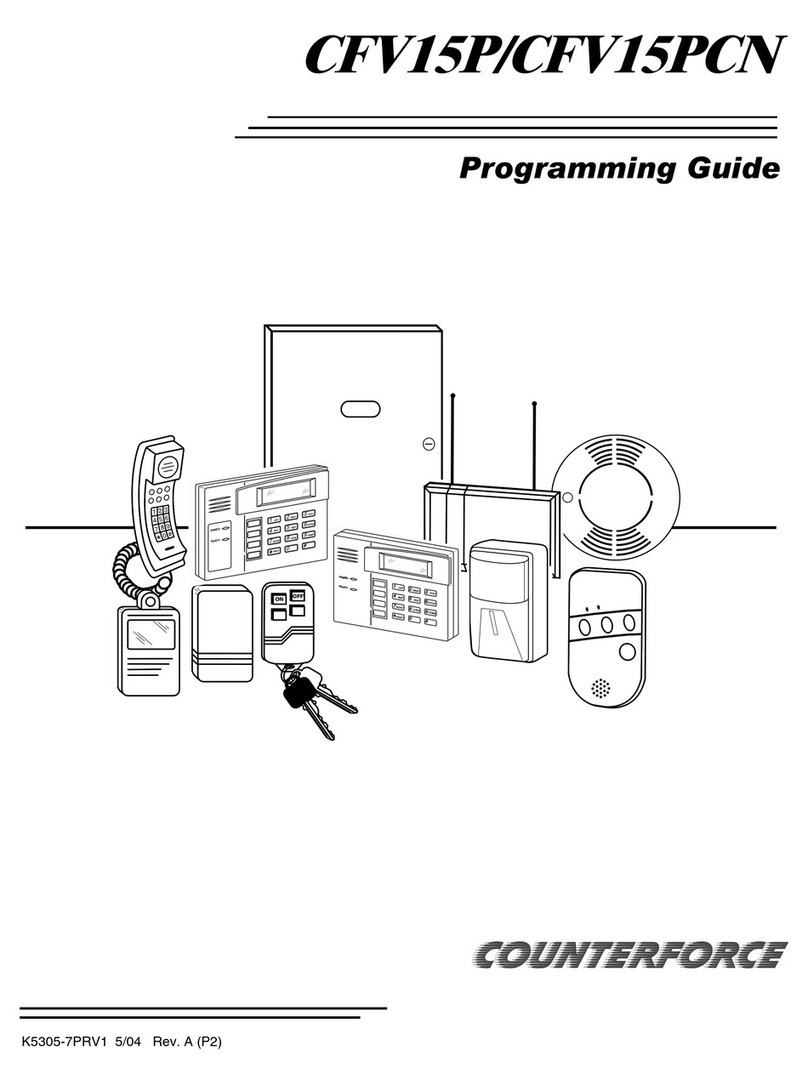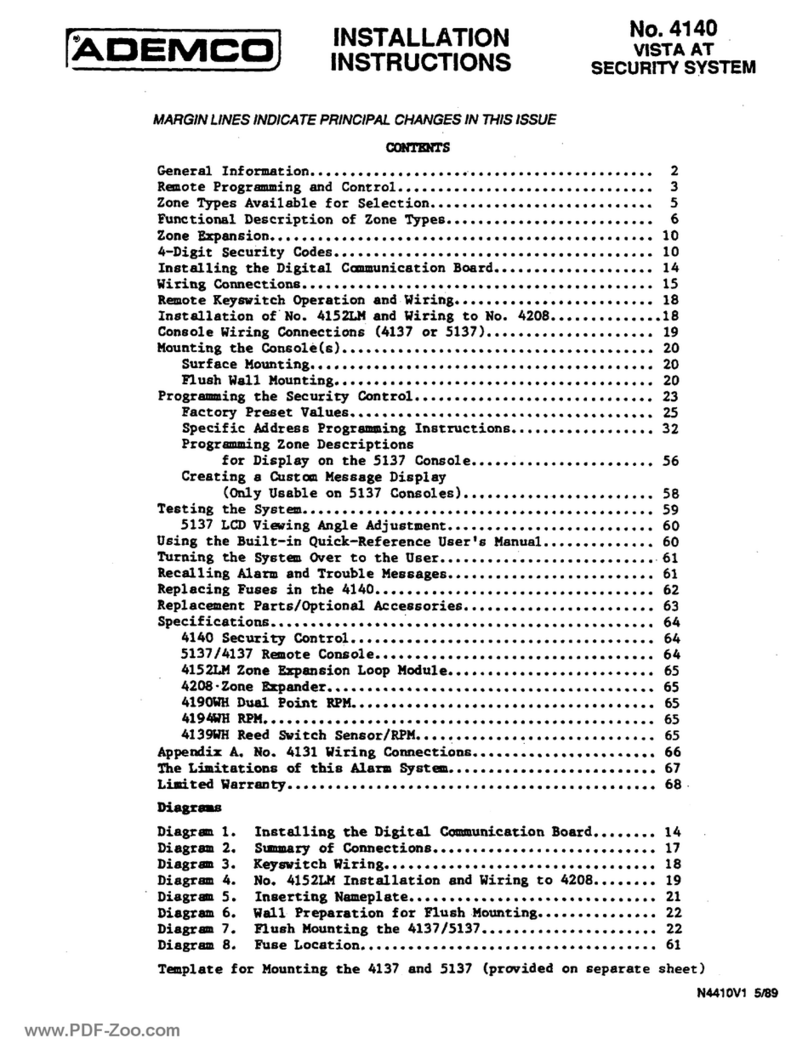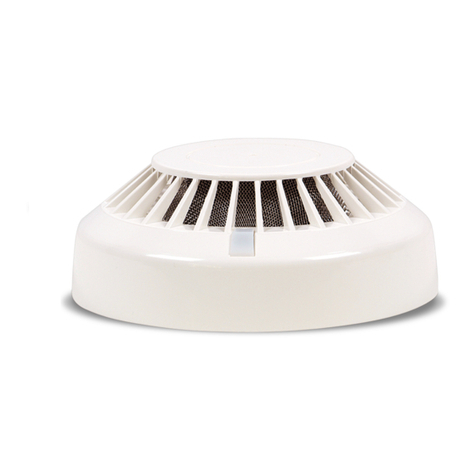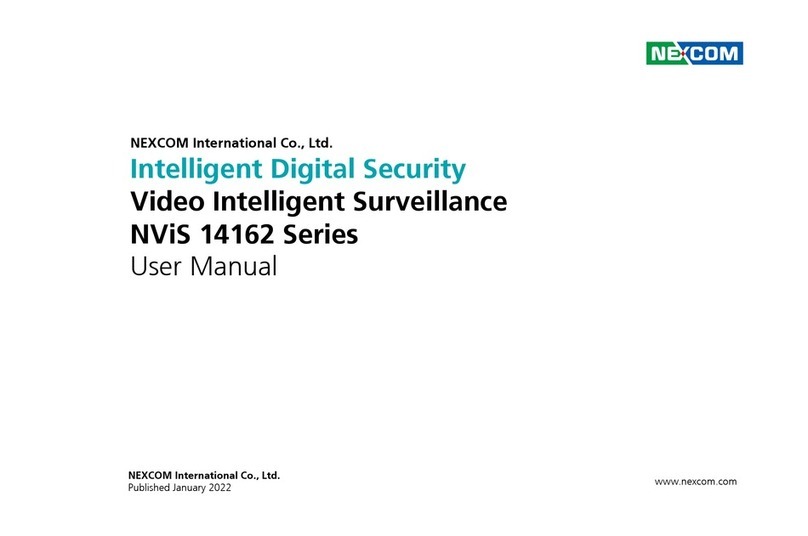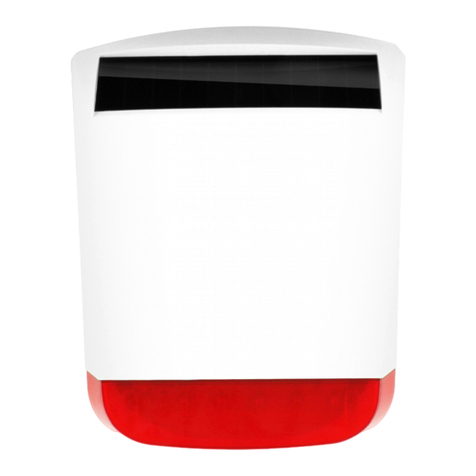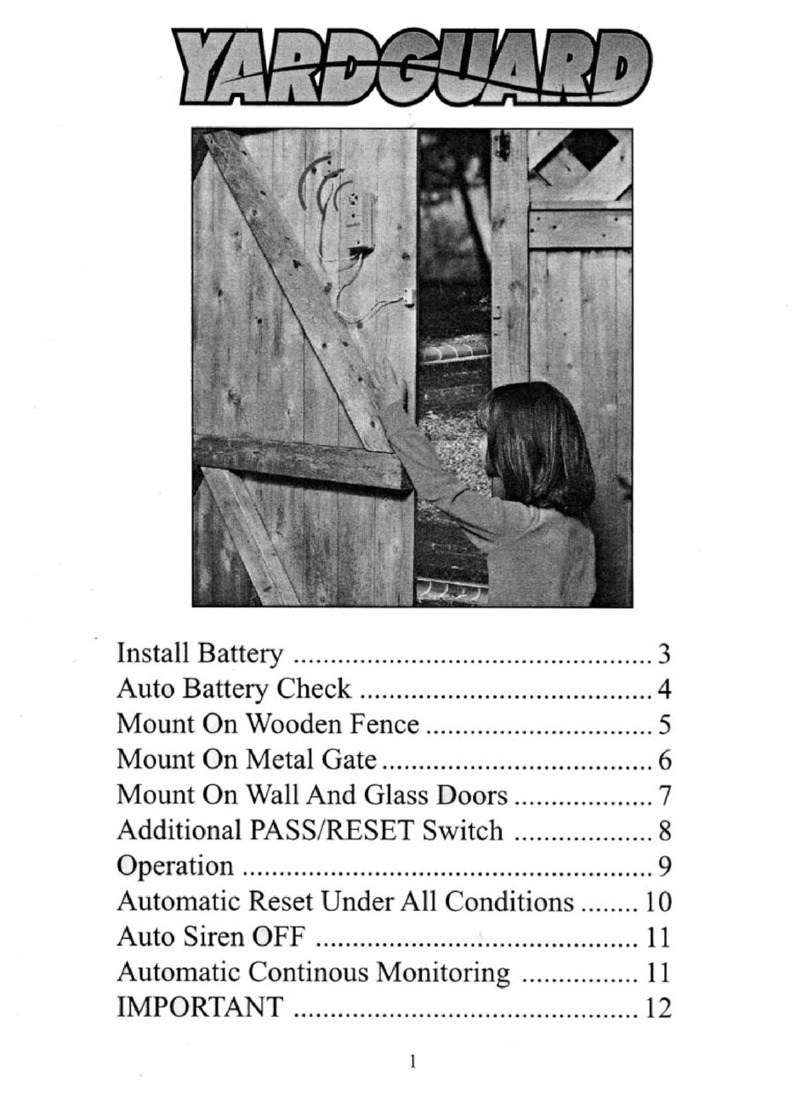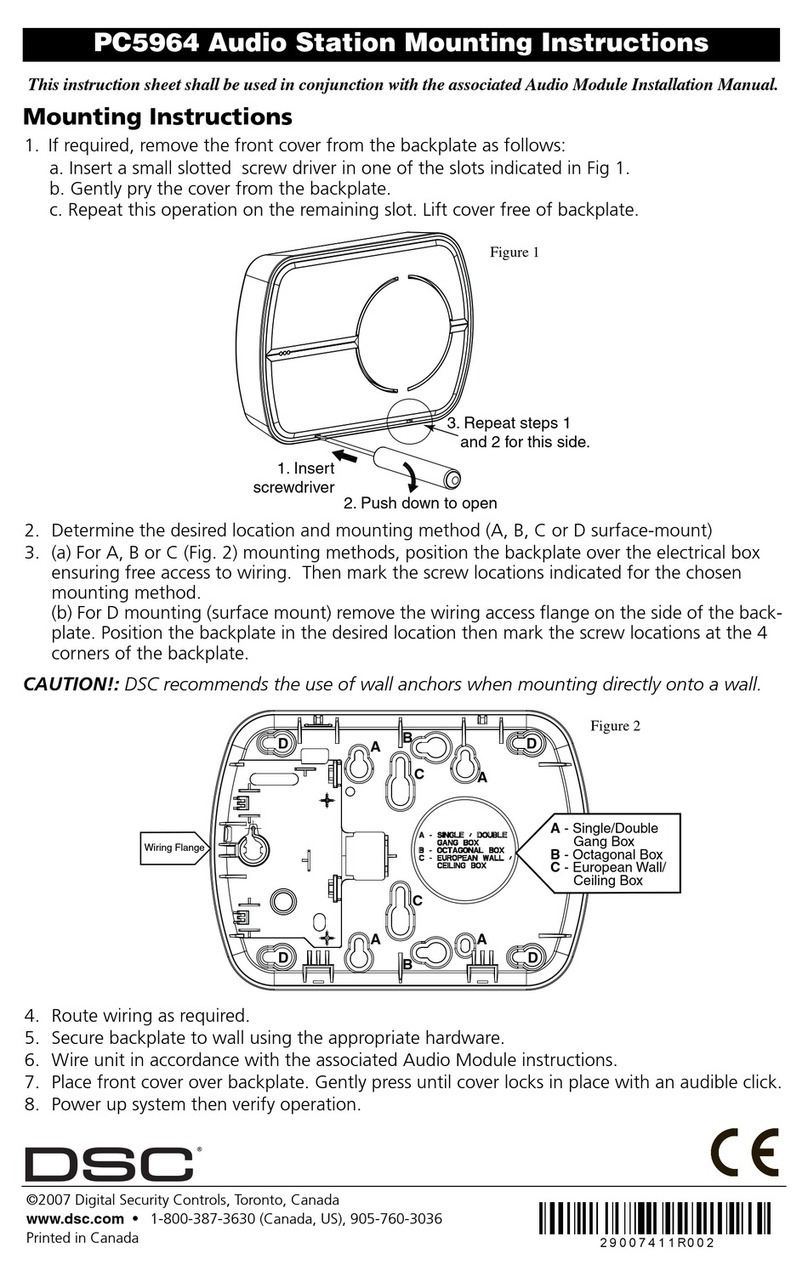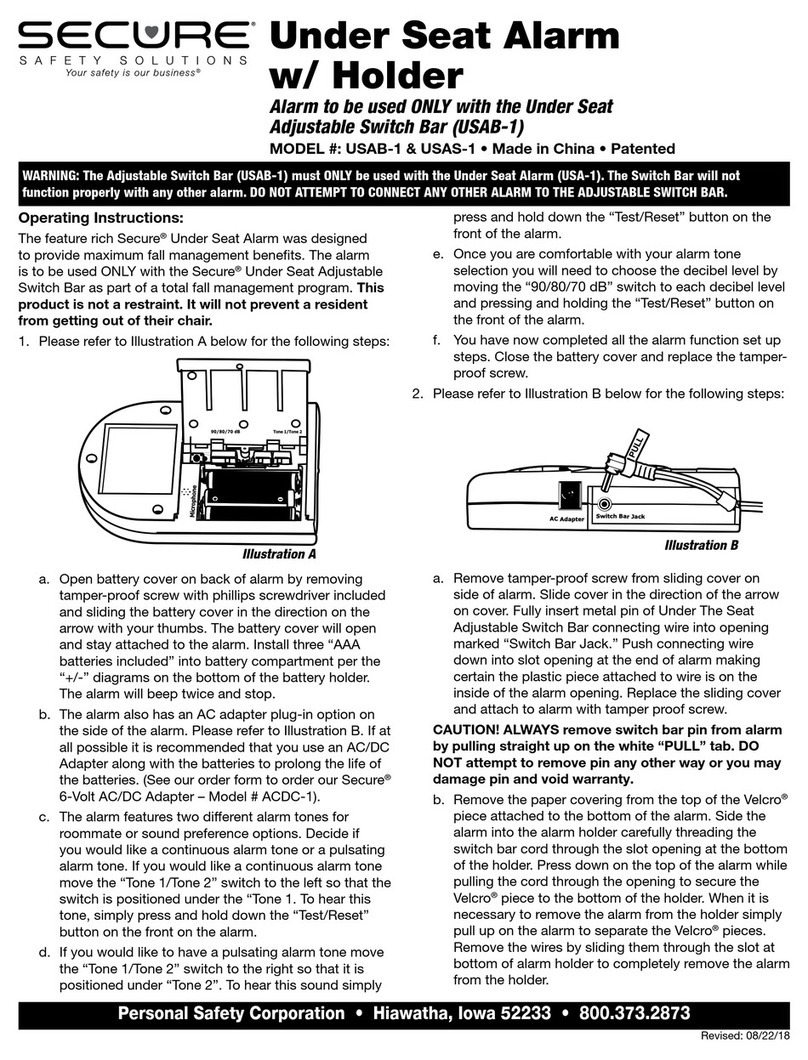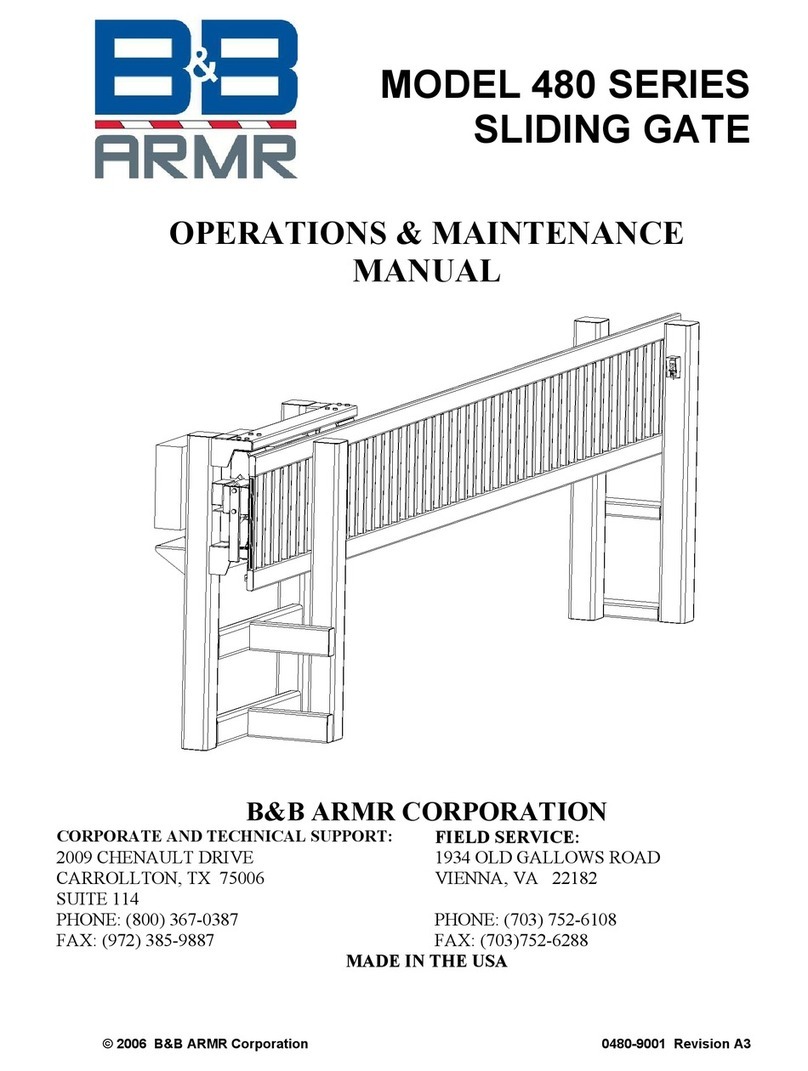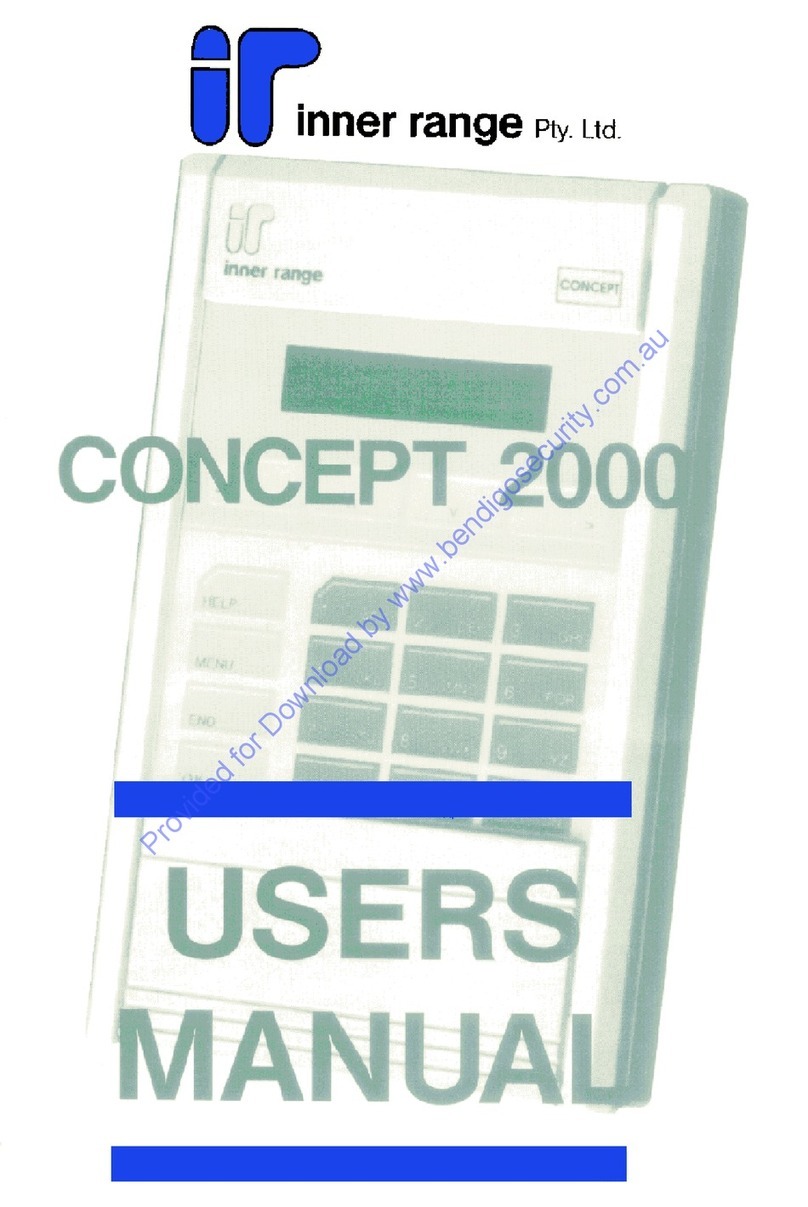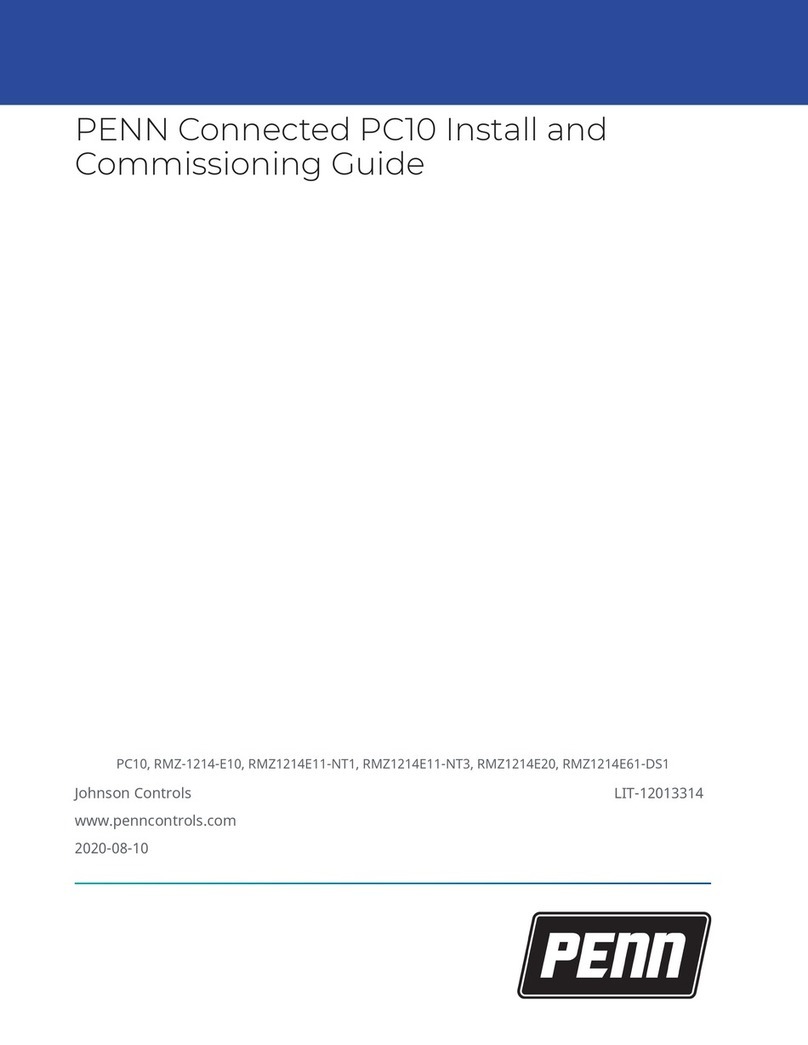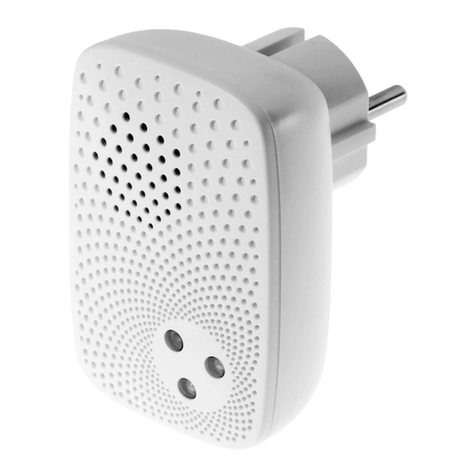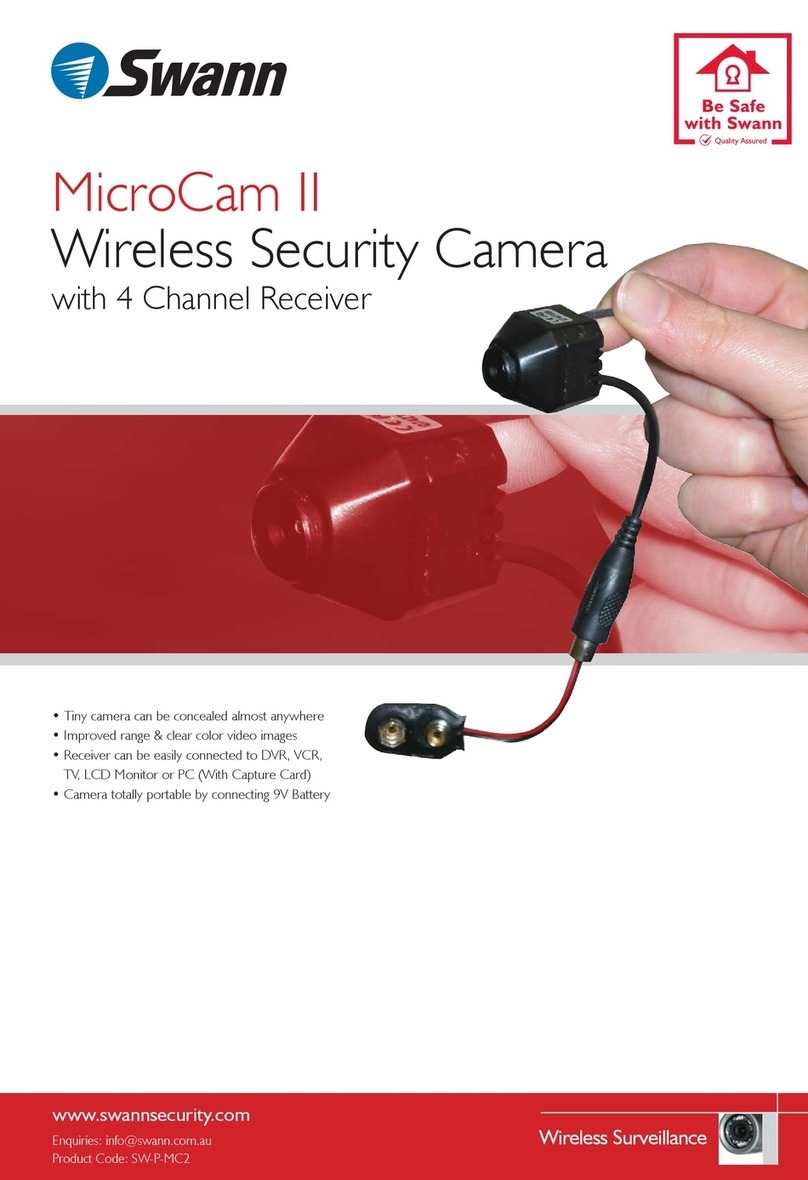
Type 4.
enabled, and an external alarm, alatched LCD display, and a
(EEPROM selected) communicator report. Depression of any key
will silence the Control’s local alarm sounder for 10 seconds, A
system-wide EEPROM defined number of alarm reports for this
zone will be allowed to be transmitted (swinger suppression) by the
communicator in one armed period. The communicator will trans-
mit arestoral message when the zone is restored for atime greater
than its physical response time (less than 1second).
During the disarmed state, afaulted zone will result in a
“DISARMED-Praaa *to show faults” display. Subsequent
depression of the* key will cause all the descriptors of the faulted
zones to be sequentially displayed. No communicator reports will
be initiated.
BURGLARY INTERIOR, FOLLOWER: This zone will always
have Exit Delay W. The zone has an Entry Delay if preceded by a
fault man Entry/Exit zone (type #1 or #2). If not pracadad by an
Entry/Exit zone fault, an immediate audible local (Control) and
external alarm, latched display, and a (EEPROM selected) com-
municator report are initiated. Depressing any key at the Control
will silence the Control sounder for 10 seconds. Asystem-wide
EEPROM defined number of alarm reports for this zone will be
allowed to be transmitted (swinger suppression) by the communi-
cator in one armed period. The communicator will transmit ares-
toral message when the zone is restored for atime greater than its
phys!cal response time (less than 1second),
During the disarmed state, afaulted zone will result in a
“DISARMED-Press xto afrow faulta” display. Subsequent
depression of the* key will cause all the descriptors of the faulted
zones to be sequentially displayed, No communicator reperk will
be initiated,
Type 5.
TyfJs 6.
BURGLARY PERIMETER, TROUBLE BY DAY/ALARM BY
NIGHT During the disarmed state (day), faulting the zone will
initiate a‘trouble” display and a latched sounder (beeping), The
Control will beep rapidly along with alatched display of the faulted
zone and the word CHECK. Pressing any key will silence the beep-
ing for 10 seconds, Code +OFF will silence the beeping but will
only clear the display of azone that had the fault condition
removed.
Each trouble will result in a“trouble” report (if programmed). A
trouble restoral message will be sent as each zone is restored to
normal condition. The maximum number of trouble reports per
armed petiod will be limited by the system-wide EEPROM number
of alarm reports option (swinger suppression).
During the armed state (night), the local (Control) and external (if
used) alarm sounders will activate and the communicator will
report alarms, Asystem-wide EEPROM defined number of alarm
reports for this zone will be allowed to be transmitted in one armed
period. Restorals will be sent when the zone is restored for atime
greater than its physical response time (less than 1second).
24-HOUR SILENT ZONE: Sensors assigned to this zone, when
faulted, will initiate acommunicator report. There will be no local
displays or alarm sounds. Upon keying Code plus OFF, there will
be a memory indication of the faulted zone
Asystem-wide EEPROM defined number of alarm reports for this
zone will be allowed ‘to be transmitted (swinger suppression) by the
communicator until an OFF sequence is performed. The communi-
cator will transmit arestoral message when the zone is restored for
atime greater than its physical response time (less than 1second).
During the disarmed state, afaulted zone will result in a
“DISARMED-Prees Ato show faults” display. Subsequent
